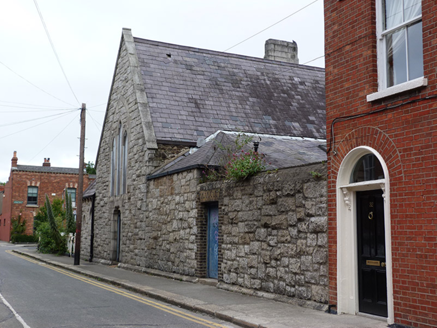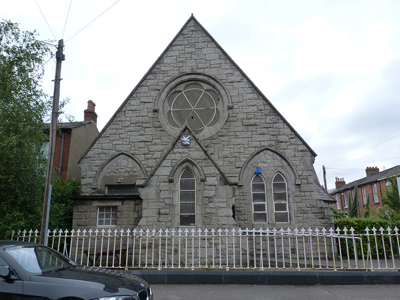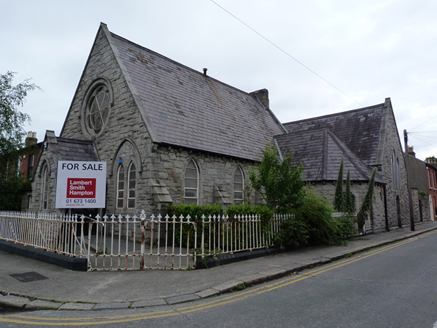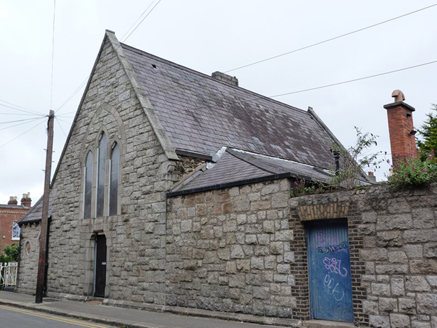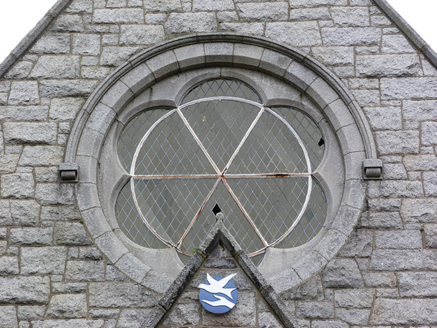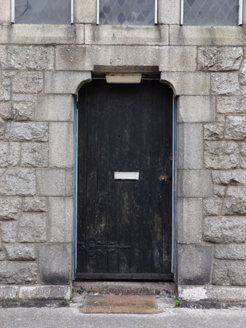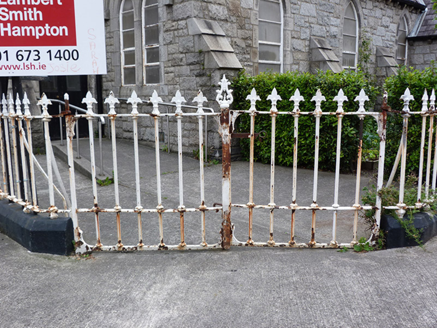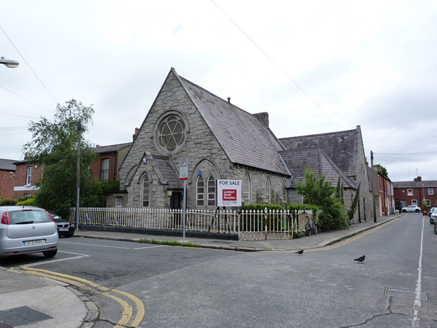Survey Data
Reg No
50110119
Rating
Regional
Categories of Special Interest
Architectural, Artistic, Historical, Social
Previous Name
Kingsland Park Methodist Church and National Schoo
Original Use
School
Historical Use
Office
Date
1865 - 1875
Coordinates
315331, 232496
Date Recorded
22/03/2018
Date Updated
--/--/--
Description
Corner-sited gable-fronted former Methodist church, built 1870-71, having three-bay nave with gable-fronted porch to west end and single-storey transept to south of nave. Later used as office. Gable-fronted former school, set perpendicular to church, adjoining east end. Pitched slate roofs, hipped to transept, having granite barges to gables, granite chimneystack, corbelled sandstone eaves course and cast-iron rainwater goods. Snecked rusticated granite walls with stepped granite buttresses to nave, and carved granite plinth course. Pointed-arch and round-headed window openings with chamfered ashlar granite surrounds, sloping granite sills, single, double and triple-light windows, some with granite hood-mouldings; oculus to front with chamfered ashlar granite surround, granite hood-moulding and leaded multifoil window. Stilted-arch doorways with dressed granite surrounds and timber battened doors with cast-iron strap hinges; double-leaf timber battened and glazed door to porch. Cast-iron railings with fleur-de-finials on cut masonry plinth wall, with matching double-leaf gate.
Appraisal
A modestly scaled but finely detailed Gothic Revival church and national school designed by John McCurdy. It exhibits a wealth of stone carving that is characteristic of its ecclesiastical function. The use of granite in an area of predominantly red brick lends tonal variation to the streetscape and creates a picturesque focal point. The juxtaposition of rock-faced and ashlar granite dressings provides textural variation. The foundation stone was laid in 1870 by Frederick Stokes, the developer responsible for much of the housing in Victoria Street and its environs. Its construction reflects the diversity of religious beliefs in the area, with Catholic and Church of Ireland faiths also represented in the vicinity.
